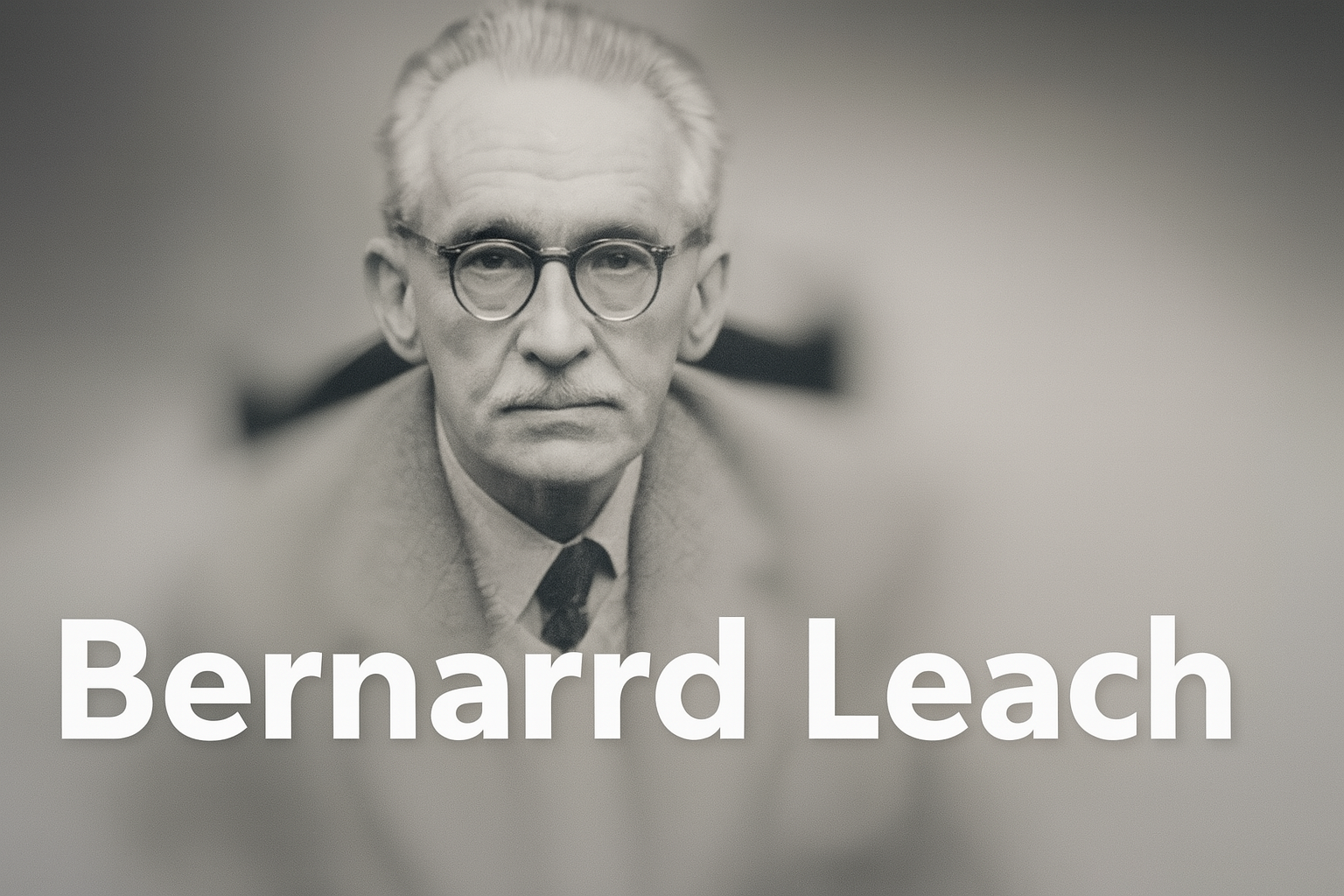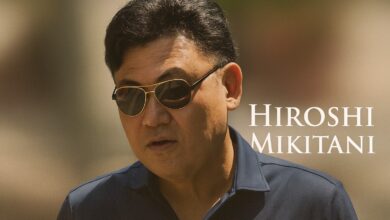Bernard Leach: Master Potter Who United East and West
Explore the visionary legacy of Bernard Leach, the father of British studio pottery and the bridge between cultures through clay.

Introduction
Bernard Leach was far more than a potter—he was a cultural ambassador who reshaped the trajectory of modern ceramics. Revered as the father of British studio pottery, Leach’s legacy blends craftsmanship with philosophical depth. His works fused Eastern techniques with Western sensibilities, creating an enduring bridge between traditions.
This article explores the full life of Bernard Leach, from his early beginnings to the creation of the iconic Bernard Leach Pottery studio in St Ives, Cornwall. We will also highlight his writings, spiritual philosophy, artistic influence, and continued relevance in the world of craft and design.
Quick Bio
| Field | Details |
|---|---|
| Full Name | Bernard Howell Leach |
| Date of Birth | 5 January 1887 |
| Place of Birth | Hong Kong |
| Nationality | British |
| Ethnicity | White British |
| Education | Slade School of Fine Art, LSE |
| Accent | British RP |
| Religion | Baháʼí Faith |
| Occupation | Potter, Author, Educator |
| Died | 6 May 1979 (aged 92) |
| Known For | Bernard Leach Pottery, writings |
Early Life and Education
Bernard Howell Leach was born on 5 January 1887 in Hong Kong. His mother tragically died during childbirth, and Leach spent his early years in East Asia. After his childhood in Japan, he was sent to England for formal schooling and later attended Beaumont College, a Jesuit institution.
He studied at the Slade School of Fine Art in London, where he developed skills in drawing and etching. His artistic talent was evident from the beginning, but it wasn’t until his encounter with Japanese pottery that his creative purpose fully crystallized.
The Japanese Influence and Career Start
While living in Japan around 1911, Leach attended a raku pottery demonstration that changed his life. This event introduced him to the deeply spiritual and communal nature of Japanese ceramics. He apprenticed under Urano Shigekichi (Kenzan VI), absorbing the essence of traditional pottery.
During this period, Leach also became closely associated with the Mingei movement, led by Soetsu Yanagi and Shoji Hamada. These connections shaped his belief that pottery should be functional, humble, and spiritually resonant. He adopted many elements from Eastern philosophy, aesthetics, and kiln techniques.
Establishing Bernard Leach Pottery
In 1920, Leach returned to the UK and established Bernard Leach Pottery in St Ives, Cornwall, alongside Shoji Hamada. They constructed Britain’s first climbing kiln (noborigama), a traditional Japanese structure, and began crafting pots that reflected a hybrid East-West aesthetic.
The studio quickly gained attention for its unique designs and philosophical underpinnings. Leach’s emphasis on craftsmanship, utility, and spiritual meaning revolutionised the Western understanding of pottery. His studio became a hub for international artists and apprentices who later became leading figures in modern ceramics.
Philosophy and Spiritual Influence
Leach’s conversion to the Baháʼí Faith in 1940 profoundly influenced his artistic approach. He saw pottery not just as a skill, but as a sacred act—shaping earth with intention, humility, and purpose. His works often expressed themes of unity, peace, and human connection.
He described the potter’s wheel as a metaphor for divine order and the artist’s role as a servant of higher truths. His religious beliefs and cultural appreciation made him a unique voice in the craft world, where material often overtakes meaning.
Literary Contributions and Thought Leadership
Bernard Leach was also a prolific writer. His seminal work, A Potter’s Book (1940), became a foundational text for studio potters worldwide. In it, he outlined his philosophy of art, aesthetics, and craftsmanship, combining technical guidance with poetic insight.
He also authored Drawings, Verse & Belief (1973), showcasing his poetic mind, and Beyond East and West (1978), a reflective memoir. Through his writing, Leach articulated a deeply personal vision of pottery as a moral and spiritual practice, not just a creative craft.
Artistic Legacy and Recognition
Leach received numerous honors during his lifetime, including a Commander of the Order of the British Empire (CBE) in 1962 and Companion of Honour in 1973. He was also awarded Japan’s Order of the Sacred Treasure, recognizing his role in strengthening Anglo-Japanese cultural ties.
His pottery—typically earthy, subtle, and modest—embodied the idea that beauty lies in imperfection and everyday use. Unlike industrial ceramics, Leach’s work embraced individuality and human touch, inspiring a generation of artists to reject mass production in favor of handmade authenticity.
Business Ventures and Impact
While not primarily motivated by profit, Leach’s pottery studio functioned as a self-sustaining venture. Bernard Leach Pottery sold functional ceramics, exhibited in galleries, and attracted international commissions. The studio also served as a training ground for aspiring potters, including his own son, David Leach.
The business model was rooted in ethical values: sustainability, integrity, and education. Through workshops, writings, and exhibitions, Leach extended his influence far beyond the pottery wheel, helping create a global network of studio potters.
Later Years and Continued Relevance
Even in his later years, Leach remained active in writing and mentorship. His reflections became increasingly spiritual, seeing clay not just as material but as metaphor. He passed away on 6 May 1979 at the age of 92, leaving behind a profound legacy.
Today, the Leach Pottery studio in St Ives continues to operate, offering classes, exhibitions, and artist residencies. Museums and galleries across the world hold his work, and modern ceramicists still draw upon his teachings as a source of inspiration.
Conclusion
Bernard Leach was more than a potter—he was a thinker, writer, spiritual seeker, and cultural pioneer. Through Bernard Leach Pottery, he fostered a movement that redefined ceramics in the West, infusing it with Eastern wisdom and universal values.
His legacy lives on not just in his pots, but in every studio that prizes beauty, simplicity, and soul. As a bridge between East and West, art and spirit, tradition and modernity, Bernard Leach remains one of the most influential ceramic artists of the 20th century.
Frequently Asked Questions (FAQ)
What is Bernard Leach best known for?
He is best known as the founder of British studio pottery and for integrating Japanese and British ceramic traditions.
What is Bernard Leach Pottery?
It is the studio he established in St Ives, Cornwall in 1920, known for producing handcrafted functional ceramics and training artists.
Did Bernard Leach write any books?
Yes, his most famous book is A Potter’s Book (1940), followed by Beyond East and West and Drawings, Verse & Belief.
Was Bernard Leach religious?
Yes, he was a follower of the Baháʼí Faith, which influenced his view of pottery as a spiritual practice.
Is Bernard Leach Pottery still active?
Yes, the studio continues to operate in St Ives, preserving his techniques and philosophy.



